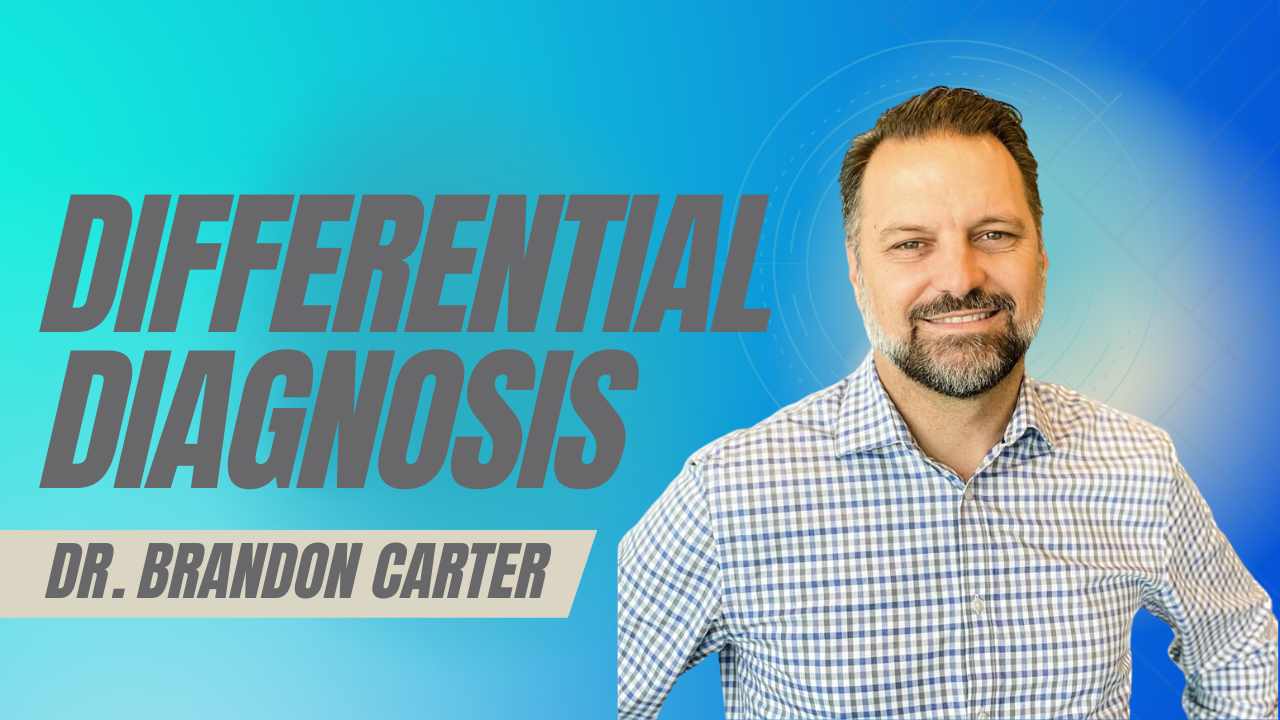Unraveling the Challenge of Differential Diagnosis in Personal Injury Cases
Jul 25, 2023
Introduction:
Hey there,
If we haven't met, my name is Dr. Brandon Carter. I've been practicing as a chiropractic physician with a focus on personal injury and traumatic injury for over 17 years! I enjoy finding medical answers to patients unknown traumatic injuries and diving into the research is a highlight of what I get to do daily. I want to share with you a few thoughts regarding a topic SO many clinicians mess up. Trust me, I have reviewed THOUSANDS of cases as an independent chiropractic examiner and I would estimate that it is missed 60-70% of the time. That's why I want to tell you about it.
Handling personal injury cases can be a complex and challenging task, especially when clients suffer from ongoing symptoms after a traumatic incident with no real answers as to why. In these situations, achieving maximum medical improvement (MMI) and appropriate compensation is an uphill battle and are top priorities. One of the most significant obstacles faced by both legal and medical professionals is the enigmatic world of differential diagnosis. I want to delve into the crucial role of differential diagnosis in personal injury cases and how it can lead to better outcomes for the affected individuals.
Understanding Differential Diagnosis:
Differential diagnosis forms the bedrock of personalized medicine. It involves a systematic process of eliminating potential causes of a patient's symptoms until an accurate diagnosis is reached. In personal injury cases, this process becomes paramount when clients have undergone multiple medical evaluations and received varying opinions without a definitive resolution.
The Impact of Elusive Diagnoses:
Let us illustrate this challenge through a recent case we handled. A patient was involved in a high-speed head-on collision. They said that they don't remember anything except seeing a car flying towards them and then feeling their head whipping forward. After that, nothing. From this accident, they experienced symptoms such as cognitive dysfunction, pressure around the head, pain in the right ear, tinnitus, vertigo, dizziness, drooping eyelid, allergy-like symptoms, and severe neck pain. They were diagnosed with a concussion at the hospital, but when symptoms didn't improve over the course of their treatment with concussion therapy and chiropractic treatment, the lack of substantial improvement despite multiple treatments raised concerns for me. The other concern was the lack of appropriate imaging and lack of referrals to other medical professionals. While a concussion seemed like an obvious diagnosis, their symptoms didn't entirely align with the initial conclusion. There was something else going on!!!
This is precisely where differential diagnosis plays a vital role, enabling healthcare providers to explore alternative possibilities and uncover underlying conditions.
The Case of Barré–Liéou Syndrome:
Upon a comprehensive review of the case, we explored alternative possibilities and discovered Barré–Liéou syndrome, a condition associated with cervical instability. This syndrome often arises from damage to ligaments in the upper cervical spine due to sudden head movements during a whiplash injury. This region, comprising C0 to C2, is held together by ligaments, not disks, which makes it less stable. The image below highlights the upper cervical region I am referring to. You can see the all of the ligaments (white) holding together the bones (blue).

Upper cervical instability often results from damage to these ligaments due to sudden head movements during a whiplash injury. Surprisingly, the patient had not been diagnosed with this condition during previous medical evaluations. Not only that, but cervical instability wasn't assessed, even with the accident type and velocity of impact.
The Path to Recovery:
One of the joys I have working for PISciences is being able to help patients find answers to their traumatic health issues. Going through the process of examination, analysis, discovery, research and finding objective evidence to share with patients, like uncovering Barré–Liéou syndrome for this individual, can be transformative for a patient and give them hope and a direction for recovery.
For patients diagnosed with Barré–Liéou syndrome, treatment often involves injections into the upper cervical region, such as prolotherapy or PRP injections, which stabilize the damaged ligaments. Video fluoroscopy imaging may also be necessary to identify unstable segments in the upper cervical spine accurately. This patient has not had any of this performed, so it's time to take some steps forward and get solid evidence and clinical outcomes to get them back on their feet! Our goal with all patients is MMI in 90 days or less and we know we can get this patient there!
Empowering Medical Professionals:
Differential diagnosis empowers medical professionals to offer personalized care and tailored treatment plans for patients. By considering various possibilities and engaging in interdisciplinary collaboration, doctors can provide more effective and targeted interventions, significantly improving patient outcomes. So if your client is stalled, you may need an independent medical examiner to support your case to move them forward.
Conclusion:
The significance of differential diagnosis in personal injury cases cannot be overstated. For both legal and medical professionals, embracing the intricacies of this process can lead to better outcomes for clients and patients alike.
Now if you have cases that are stalled in treatment, have ongoing complaints, and don't have a next step with them, jump on our training webinar where we go through in more detail on medical management and how to get your client to MMI in 90 days.
To more evidence-based findings,
Dr. Brandon Carter
Unlock the secrets to mastering your medical management on personal injury cases. Register now for our exclusive training webinar series and elevate your expertise!
Stay connected with news and updates!
Join our mailing list to receive updates on our podcast, blog and our weekly research analysis.
Don't worry, your information will not be shared.
We hate SPAM. We will never sell your information, for any reason.
